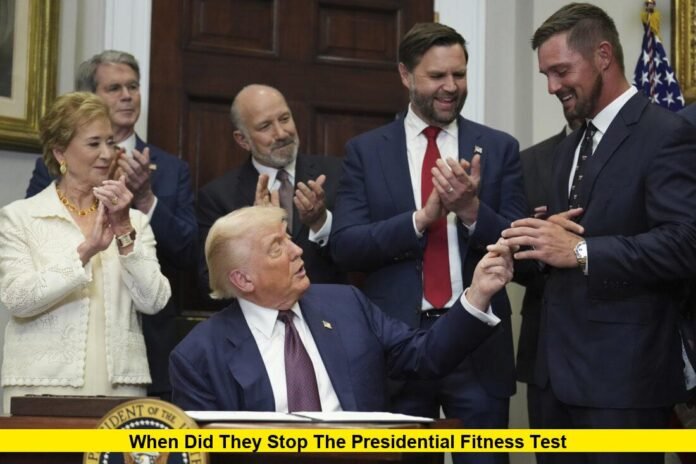If you’ve ever wondered, “when did they stop the presidential fitness test,” you’re not alone—and as of August 2025, there’s major news about its return. The test, a fixture in American gym classes for decades, was officially phased out after the 2012-2013 school year under the Obama administration. But now, President Donald Trump has revived this storied tradition by signing an executive order on July 31, 2025, to reestablish the Presidential Fitness Test in public schools nationwide.
A Brief History of the Presidential Fitness Test
Launched in 1966 during President Lyndon B. Johnson’s administration, the Presidential Fitness Test was designed as a response to mounting concerns about the physical readiness of American youth. Earlier studies in the 1950s by Dr. Hans Kraus and Dr. Sonya Weber had exposed a fitness gap between American and European children, which alarmed U.S. leaders. The result was the creation of the President’s Council on Youth Fitness, spearheaded initially by President Eisenhower, and ultimately leading to the nationally recognized test.
Year-by-year, the test evolved from simple strength exercises to a battery of challenges designed to assess various aspects of physical ability. The most well-known components included:
- A one-mile run
- Sit-ups (in under a minute)
- Push-ups or pull-ups
- Shuttle run
- Sit-and-reach flexibility test
Students aged 10 to 17 could earn the coveted Presidential Physical Fitness Award if they scored in the top 15% nationwide.
Read also-What is included in presidential fitness test standards
Why Was It Stopped?
After the 2012-2013 school year, the Obama administration discontinued the presidential fitness test. The new Presidential Youth Fitness Program focused more on holistic health than athletic prowess, aiming to encourage personal improvement over competition. Critics had long argued that the annual, public competition sometimes shamed students and did little to instill lifelong fitness habits. The revised approach instead emphasized tracking personal progress, promoting goal-setting, and offering resources for all students regardless of their starting point.
2025: The Surprise Comeback
Fast forward to July 31, 2025: President Donald Trump, citing a national decline in childhood fitness and “a need to foster cultures of health and excellence,” brought back the iconic test with a stroke of his pen. The new order charges the President’s Council on Sports, Fitness, and Nutrition—now chaired by professional golfer Bryson DeChambeau—to formulate updated criteria and oversee the implementation across schools.
Key details of the revived test:
- Schools nationwide must once again administer standardized physical fitness assessments.
- High-performing students will have the opportunity to earn a new version of the Presidential Award.
- The test is expected to roll out with updated guidelines for inclusivity and student safety.
The announcement, attended by star athletes and health officials, coincides with several other large sporting initiatives in the U.S.—including preparations for the 2026 FIFA World Cup and 2028 Summer Olympics. These developments underscore a renewed national emphasis on youth health and athletic excellence.
Public reaction has ranged from excitement to nostalgia—and even anxiety. Many remember the fitness test as a rite of passage, while others recall embarrassment or frustration. Health experts are closely watching to see how the modernized version will address concerns about mental health and inclusivity for all ability levels.
What Happens Next?
- The President’s Council will finalize new guidelines and begin working with schools in the 2025-2026 academic year.
- Updated metrics may be introduced to better serve today’s student populations.
- There will be national campaigns to promote engagement and ensure that healthy habits extend beyond school walls.
The Bottom Line
The story behind “when did they stop the presidential fitness test” has added a fascinating new chapter in 2025. As the revived tradition rolls out, students, parents, and educators alike will be eager to see how the latest version balances physical challenge, inclusivity, and lifelong well-being.
What’s your take on the return of this long-running tradition? Join the conversation below and let us know your thoughts!
